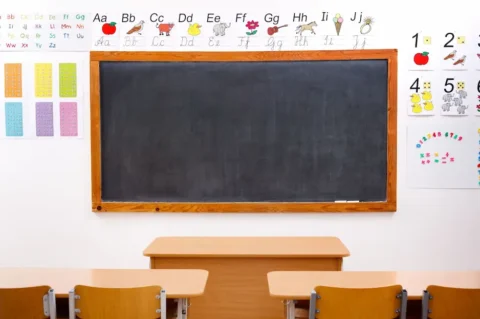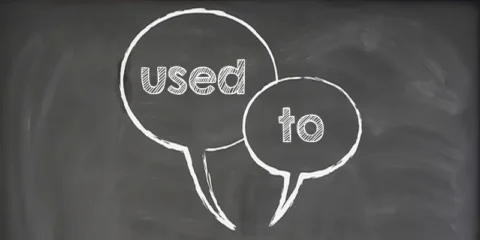It’s not just about what’s easiest to drop into your slides or photocopy. It’s about knowing what each type of material is for, how to use it effectively, and how to design tasks around it that your learners can actually succeed at.
Here’s how to pick materials that really work for your learners, with specific examples you can use in your next lesson.
Authentic vs Graded Materials: Not Either/Or
Teachers sometimes treat this as a binary choice – but it isn’t. Both authentic and graded materials have their place. The key is understanding what each is good for, and what it isn’t.
Graded materials are the type you’ll find in published coursebooks, and are written specifically for language learners. They’re designed around a single structure, pitched at a certain level, and control everything else to avoid confusion. If you’re teaching the past simple, for example, you can be sure that in a graded coursebook dialogue, every sentence will stick to the past simple. You’d never see something like:
- So yesterday I left the house and this guy comes over and says: “You really are late today.”
Native speakers really do mix tenses when talking about the past – but you won’t find that in a graded text. And that’s deliberate. If your aim is to raise awareness of a specific structure, then a tightly controlled graded text is exactly what you need. It gives learners repeated, clear exposure so they can start noticing patterns and figuring out how it works.
Authentic materials, on the other hand, are created for native speakers – podcasts, newspapers, YouTube videos, menus, social media posts, announcements… They show students how people really use English: messy, idiomatic, fast, full of variety. That makes the language come alive, which can be hugely motivating. But they also come with challenges.
Advantages of authentic materials
- They expose learners to natural language, including idioms, contractions, and informal structures.
- They help develop real-world reading and listening strategies, like inferring from context and focusing on key details.
- They offer cultural context and variety, including different registers and accents.
- If used well, they can give learners confidence that they can understand real English, even if not every word.
Challenges of authentic materials
- They can be time-consuming for teachers to find and prepare.
- They may include unnecessary or irrelevant details that obscure the teaching point.
- Some themes or cultural references may not be appropriate for your learners, or they may to too culturally-specific – too much background knowledge may be needed.
- They can leave students feeling frustrated or dissatisfied (“I can complete the task, but I don’t really understand the text”).
You don’t have to choose between a fully graded or fully authentic text – you can also opt for something in between, a “semi-authentic” material. This might be an authentic text, lightly adapted, or shortened, to make it more accessible, while still keeping its “real world” feel. This kind of material often fits more closely with the idea of roughly tuned input – authentic materials chosen so they’re just a little above the learners’ current level, but still achievable with support. In his “Input Hypothesis”, Stephen Krashen argued that learners make the most progress when exposed to language at what he called “i+1”: just beyond what they already know, but still comprehensible. This gives learners a real challenge while still letting them succeed.
That doesn’t mean authentic materials are only for advanced students, though – far from it. Even elementary students can benefit from fully or semi-authentic materials, if you choose the right task.
Choose the Right Task (Not Just the Right Text)
This is one of the most important principles in using materials effectively – and one of the most often overlooked.
Teachers sometimes pick an authentic text and expect students to just “get it.” Then they’re disappointed when students freeze, don’t understand much, and disengage.
The solution is to design a task that matches your learners’ level, not just the material’s level. A well-designed task can turn even a challenging authentic text into a confidence-building activity.
You can use a high-level authentic text with elementary students – as long as the task focuses on what they can realistically do. This is one way to provide that roughly tuned input we talked about earlier – a real, slightly challenging text, but paired with a manageable goal.
Here are a couple of examples of how you can do this:
- Play a recording of a station announcer calling out train times. Don’t ask students to understand the whole announcement – just listen for and write down any times they hear.
- Show a short online news clip and ask students to note down which countries are mentioned.
Both are simple, confidence-building tasks that show even low-level students they can get meaningful information from authentic, fast, “real” English. That’s hugely motivating and helps them build strategies for reading and listening, even when they can’t catch every word.
If you want students to eventually deal with more complex language, start simple, build their confidence, and scaffold the tasks as they progress.
Scaffold the Tasks
Scaffolding means breaking down a challenging text into smaller, manageable steps so students aren’t overwhelmed. It also gives them a framework they can transfer to real-world listening or reading situations later on. With the “train announcer” example, your lesson plan might include the following steps:
- Show a picture of a train station. Ask questions like “Where is this?”, “Who are these people”, “What happens here?”.
- Play the first 5 seconds of the announcement, asking students “Who is talking?”
- Brainstorm with your students what kinds of information might come next. Write ideas on the board. Elicit the idea of “train times” if noone has come up with it.
- Ask students to listen to the whole announcement and write down any times that they hear.
You could even do a review of “times of the day” before listening to the whole announcement if needed – different ways of saying the time (“three oh seven”, “three minutes past seven”).
This type of scaffolding keeps students engaged and sets them up to succeed, even with material that seems “too hard” at first glance.
Make It Personal and True to Real Life
One of the best ways to make any material – authentic or graded – more effective is to make it relevant to their interests, and have them use it in a way that reflects why and how they would actually use it in real life.
What makes a task feel authentic isn’t just the text itself – it’s the way students interact with it. Design tasks that mirror what they’d actually do outside the classroom, even if the material is simplified or graded.
For example, after identifying key words in the train announcement, follow up by asking your students to imagine they’re catching a train themselves and deciding what platform to go to. Or after reading a short “breaking news” story, ask them to role-play phoning or texting a friend: “Did you hear about…?”.
We explore this concept in more detail in Passengers: A Personalised Listening Activity and also in our Used To lesson plan – both show how even small tweaks can transform a task into something students care about and engage with.
How to Choose Authentic Materials
So where do you actually find authentic materials – and how do you know if they’re worth using?
Where to look
Think about where your learners already go to read or listen to content. This depends on who you have in front of you, and comes back to my point about keeping it relevant to their interests. For some, that might mean YouTube or TikTok, podcasts, songs, or social media. For Business English, it could be a company report. Or it might be news clips, signs and ads, restaurant menus, tickets and timetables, recipes…
Tip: Don’t spend hours searching for the “perfect” authentic text. Even a short sign, notice or clip can be enough – especially if you design the right task to go with it. And remember, “authentic” doesn’t have to mean completely untouched: it’s fine to shorten, adapt, or lightly edit a real-world text to better suit your students while keeping its authentic feel.
How to judge if it’s useful
- Is it an appropriate length? You don’t have to use the whole thing – if you have a 10-page article, or a 60-minute podcast, use just a couple of paragraphs or a 30-second clip.
- Is it relevant to your students’ lives and interests?
- Does it include the kind of language you want to highlight?
- Is it visually or contextually engaging enough to spark discussion?
When to Create Your Own Materials
Sometimes, no ready-made text – authentic or graded – quite fits your class. That’s when it’s worth creating your own. Custom materials feel more meaningful and relevant because they’re designed specifically for your learners – and you can pitch them at just the right level while keeping them authentic in feel.
When you create your own materials, keep them simple and quick to make, directly relevant to your students’ lives and interests, and make sure they actually achieve your teaching aim before you bring them to class. Here are a few examples:
- Record a conversation or dialogue with some friends – see Passengers: A Personalised Listening Activity for a step-by-step example of how and why this works well.
- Design a board game to practise a grammar point (you’ll find a few board game examples here).
- Write an email, a brief story or narrative, a quiz, or a short role-play script that incorporates your target language.
Common Pitfalls to Avoid
- Picking authentic materials that are irrelevant to your student’s interests.
- Not grading the task according to your students’ level.
- Expecting students to “just figure it out” without scaffolding.
- Assuming authentic materials can only be used with advanced students.
- Relying on graded materials alone and pretending that’s what real English sounds like.
- Spending hours making elaborate materials when a simple task would do.
Remember: You don’t always have to simplify or grade the material – sometimes it’s enough to simplify or grade the task.
Final Thoughts
Choosing between graded and authentic materials is about knowing when and how to use and adapt them. Graded materials are very good for teaching and practising a specific language point in a controlled way. Authentic materials are very good for motivating and exposing students to real-world English – even beginners, if the task is right.









12 comments
Mark
Hi. Thanks for the article. I can relate to what is said here. I have found that at Intermediate and above, the students can handle such a situation. I use such material especially with writing classes as they rewrite the passage and use alternate tenses to indicate past.
Noel
Spot on – at the risk of commenting using incorrect grammar – I use nearly all authentic materials and you really don’t need lots of spare time. It’s right here on the Internet. Google is my main source, just type in your topic and hey presto! Furthermore, I resist graded texts for lower level and this has improved my students skim skills greatly. Try it!
Yelena
Reading texts from magazines and newspapers or watching movies or the news that are not tailored to ESL students is particularly useful and helpful. However, if students are given authentic materials straight away it will be very hard for them to get an idea of grammar, that’s where graded materials are vitally relevant. So I would suggest using authentic materials in classes for more advanced students, who are more aware of English grammar and won’t get confused.
Kurt
First of all, I enjoyed the article, it’s nothing that I didn’t know before, but it does put things in context of teaching/learning and resources used. I totally agree with Yelena. The use of authentic and graded material has a lot to do with the experiences of the child, or lack there of. Teaching younger children would require an introduction to structures in authentic material, but later in the lesson it would have to be targeted using the graded material. Looking for authentic material is in fact time consuming. Where do I start looking and researching?
Andy
I agree with Yelena – at lower levels graded materials are vital for emphasising the ‘rules’, which are better understood before introducing exceptions and anomalies, which could cause unnecessary confusion. At the other end of the scale I would say authentic materials are equally essential, as learning English at higher levels largely has the purpose of equipping students to understand text and speech from a ‘myriad’ of natural sources.
Svetlana
It’s obvious that we should use authentic materials in teaching English. But why use them only for teaching grammar? I am convinced that it is useful to provide young learners with authentic rhymes (nursery rhymes) and original books. We don’t have to explain the use of tenses while reading such stories with little children (I mean 1st or 2nd-graders, pre-reading stage).
Farhan
I like the article and think such things should be done in today’s classrooms in order to avoid the monotony and to create interest in the language learning process. Could you send one sample song along with different ways of exploiting it in the classroom?
Keith Taylor
Farhan, please have a look at these two articles and their comments for specific song ideas… Using pop songs and 9 Reasons Why You Should Use Songs to Teach EFL.
Lourdes
I like using songs in class but we must remember they have to cover our objectives… so be careful when selecting one… we need them to encourage our students into a meaningful learning.
Sarah
Authentic materials are the materials which are not specifically written for teaching. Songs are not the only authentic materials that we encounter in real world situations. There are many more that a L2 teacher can make use of in classroom teaching. There is no theoretical, empirical or pedagogical evidence that support the claim that using songs in L2 teaching can help learners to improve their communicative competence. Therefore, when someone says something, you need to have research evidence to support it. I do claim that authentic materials can have impact on learners’ language skills development and several studies have pointed out that authentic materials properly selected and creatively devised for classroom use can help learners develop their L2 acquisition.
Mousumi Dutta
Please tell me the exact meaning of graded listening
Keith Taylor
Hi Mousumi
Graded listening refers to listening materials and/or comprehension tasks that are adapted to the level of the learners. So as a learner progresses, the “difficulty” of these is increased.